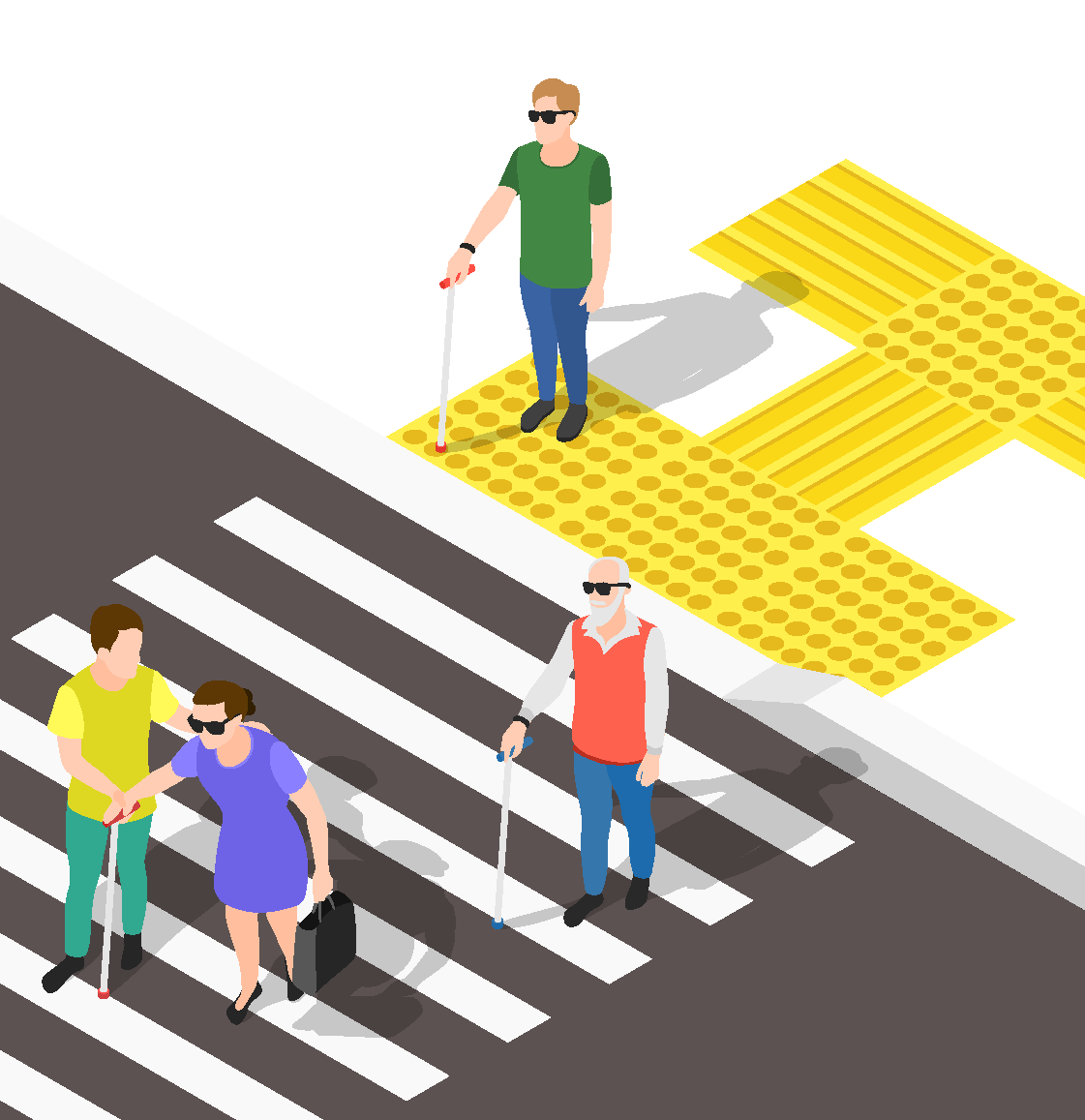









Consider this fact - In the first 20 days of 2023, over 88 pedestrians were hit. Isn't this alarming? It gets a lot tougher for visually challenged people to avoid any kind of accident.
In order to avoid the risks and minimize fatal accidents, it is important that contractors, city planners, and property owners must do their bit to promote and maintain pedestrian safety.
But the question is, how can one really achieve the maximum safety level? Well, this blog covers the answer to the same question. Let's explore!
The Accessibility for Ontarians with Disabilities Act, 2005 states that applying detectable warning surfaces in public spaces is compulsory for accessibility solutions provider. But what are these detectable warning surfaces?
If you walk or take public transport to work, you've certainly noticed those raised truncated domes placed on the ground at intersections, rail platforms, and even closer to the bus stops. These tiles equipped with raised circles are known as detectable warning surfaces, and they inform persons who are completely blind or have low vision of this shift so they can be prepared in advance before passing a busy intersection.
These curtailed dome tiles are installed to help visually impaired people to navigate and locate public spaces securely and confidently. The story doesn't end here; the detectable warning surfaces provide much more benefits to pedestrians.
Detectable warning surfaces are devised and installed to provide non-visual notice of impending hazards. Cast-in-place tiles are most typically observed at crossings for pedestrians, where they inform visually impaired individuals of the commencement onto a vehicle roadway. In a similar way, detectable warning surfaces erected on transit platforms warn pedestrians of the inclined drop into the tracks.
The detectable warning surfaces are erected at strategic spots in public spaces to draw pedestrians' attention, cautioning them to halt, analyze their environment, and move accordingly. The application of detecting warning surfaces is limited to the exterior use, these are used for internal use at escalator approaches, pedestrian crossings & top of stair landings/wheelchair ramps.
Truncated domes give a tactile warning while providing a non-slip grip on the surface of detectable warning surfaces. In all weather conditions, the crucial microtexture on detectable warning surfaces adds another layer of pedestrian safety. The non-slip surface is specifically useful in sloped places like curbs and wheelchair ramps, allowing people to gain friction.
Our surroundings typically fade away when we focus on what is in front of our eyeline. However, detectable warning surfaces draw our attention due to the clearly-visible different surfaces felt underfoot. This becomes extremely crucial for visually challenged people as they must be extra cautious of their surroundings.
The visible shift in surface causes pedestrians to pause, analyze, and take in the surroundings before continuing. Such a call to attention is especially useful in stairwells, escalators, pedestrian crossings, and transportation platforms.
It can be challenging to maneuver largely open spaces, such as concourse halls or hotel lobbies for people of all abilities, but especially for those with vision impairment. ISO Wayfinding bars tiles, which are frequently used in conjunction with truncated dome tiles, provide a tactile track that the visually handicapped may readily discover and follow.
Not only do detectable warning surfaces help the visually handicapped navigate a big open space, but they can also help individuals who do not have visual impairments. In an unfamiliar and difficult-to-navigate situation, the well-defined pathway can assist in guiding pedestrians to the main information desk or destination.
Pedestrian safety is an important factor to consider while designing public or commercial spaces. While the lawful act of ADA requires the space to be completely safe for pedestrians, especially for visually challenged people, it becomes the unsaid responsibility of the contractors to ensure that the building designed under their scope and guidance should be 100% safe and secure.
